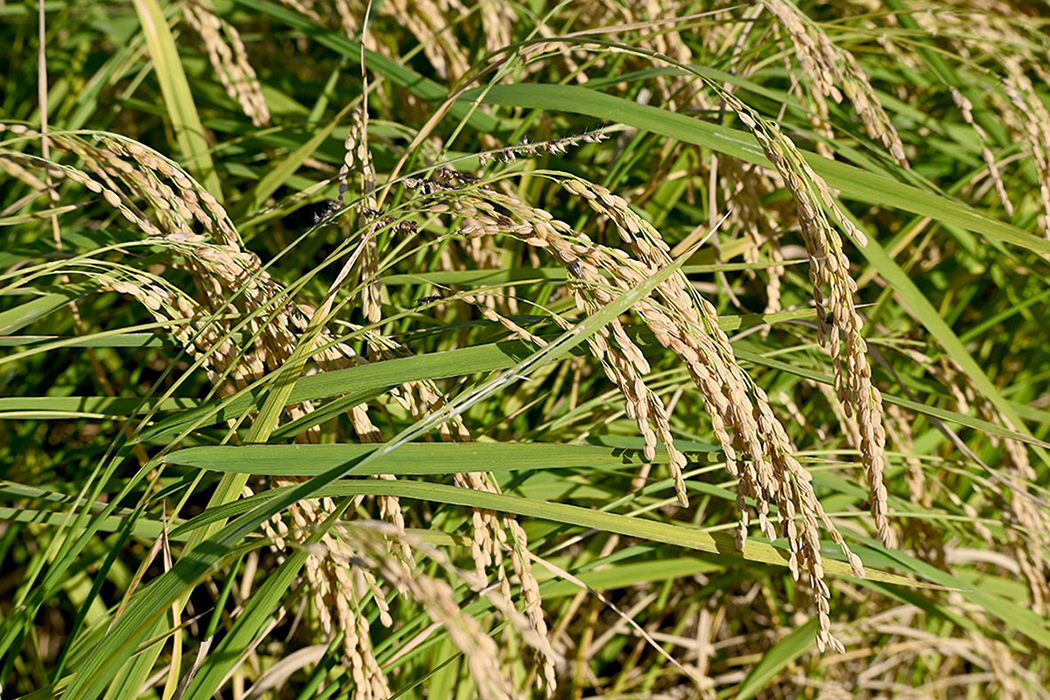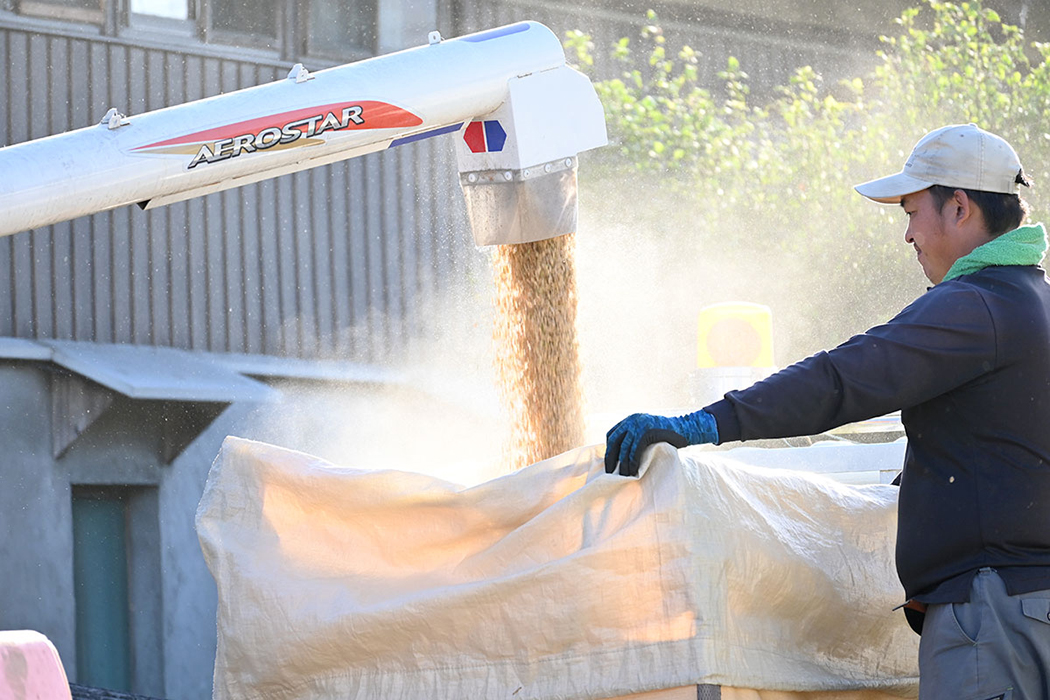Our commitment to brewing sake made purely from rice, koji, and water, and nothing else.
Since 1988, Moriki Shuzō has produced only junmaishu, pure sake that is made only with rice, kōji, and water, without any added alcohol. Our aim is to make sake that is less about fragrance and more about flavor: ideal to enjoy—sometimes cold, sometimes heated—with food.
Junmaishu is what we, as sake brewers, want to drink ourselves.
And, because we only use 300 koku (about 45,000kg) of rice a year, we are able to do our entire process by hand, investing a great deal of care and labor into making the best sake we can.
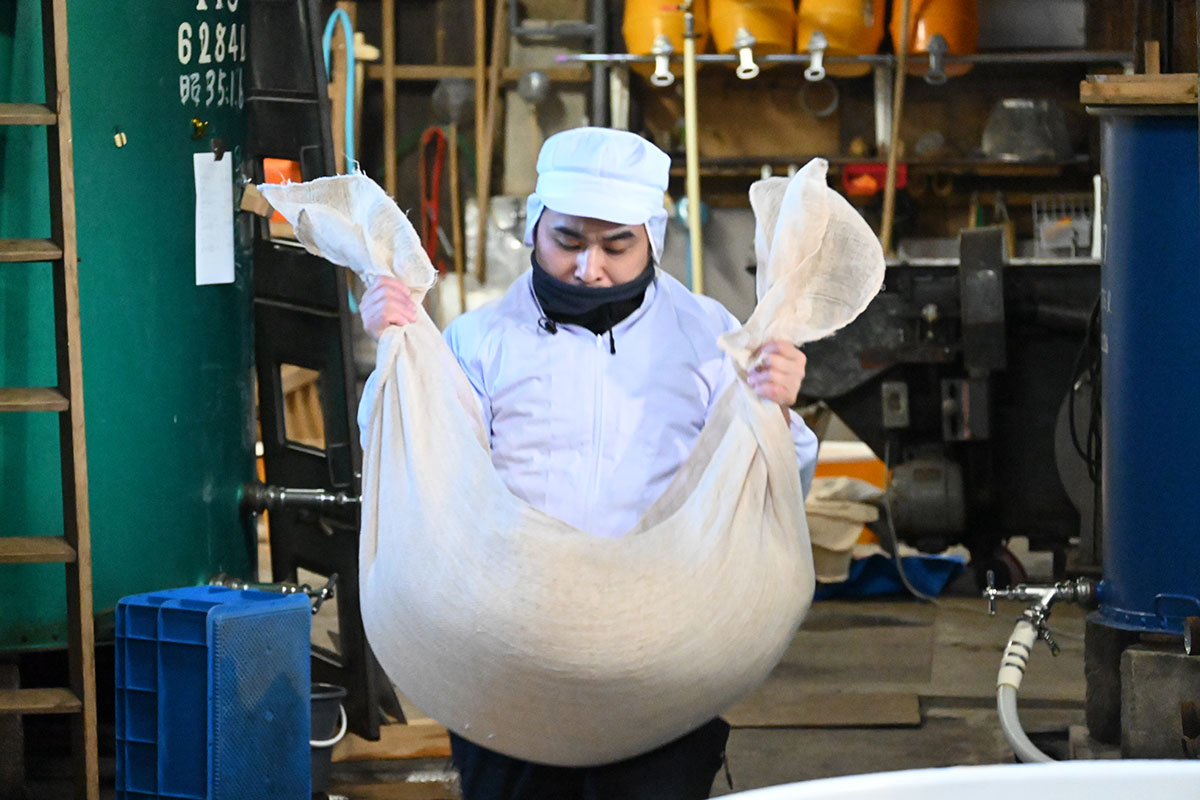
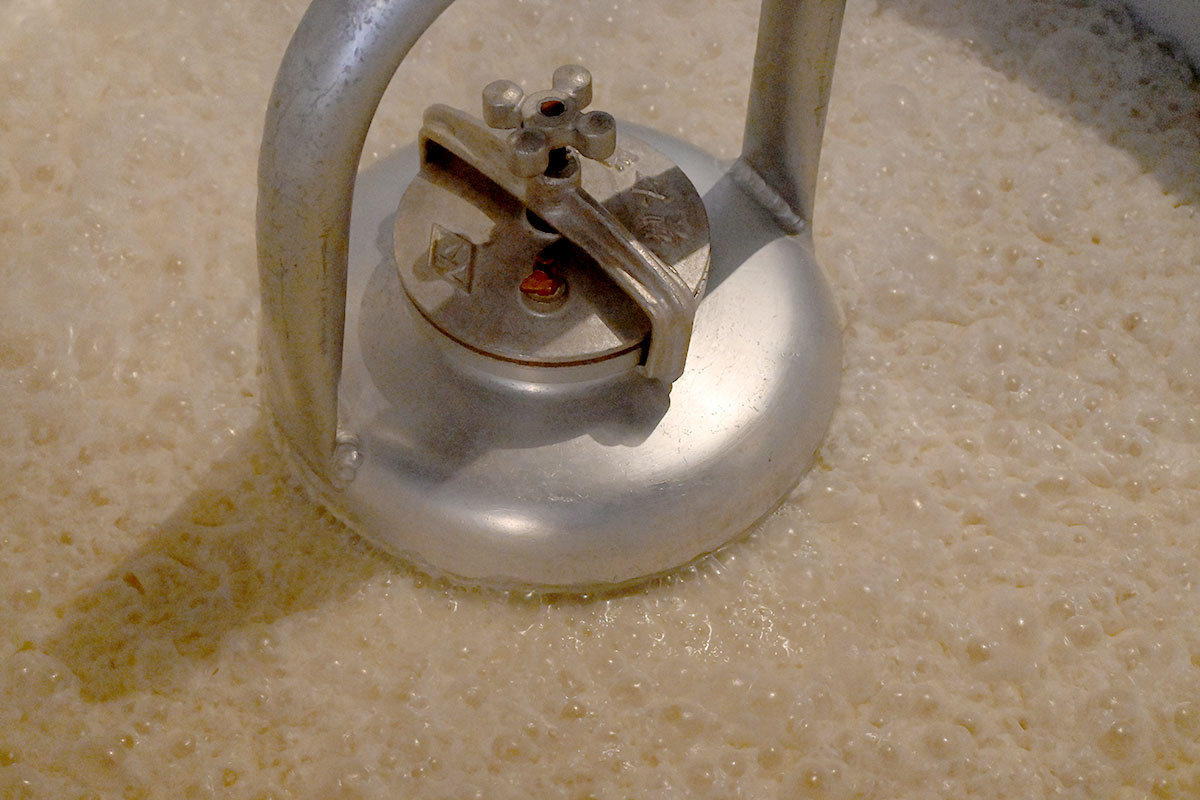
Making kōji using the wooden tray method
We make all of our kōji using the traditional futakōji-hō, or tray kōji method.
There is a saying in sake brewing: “One, kōji. Two, moto (starter mash). Three, moromi (main mash).” The quality of the kōji has an enormous influence on the development of the starter mash, the fermentation of the main mash, and ultimately the quality of the sake itself. In other words, in order to have good, robust brews, it is absolutely necessary to make good, high-quality kōji.
The tray kōji method is extremely labor-intensive, requiring far more work than other kōji-making methods. Even so, we consider it the most reliable way of producing the quality of kōji we require.
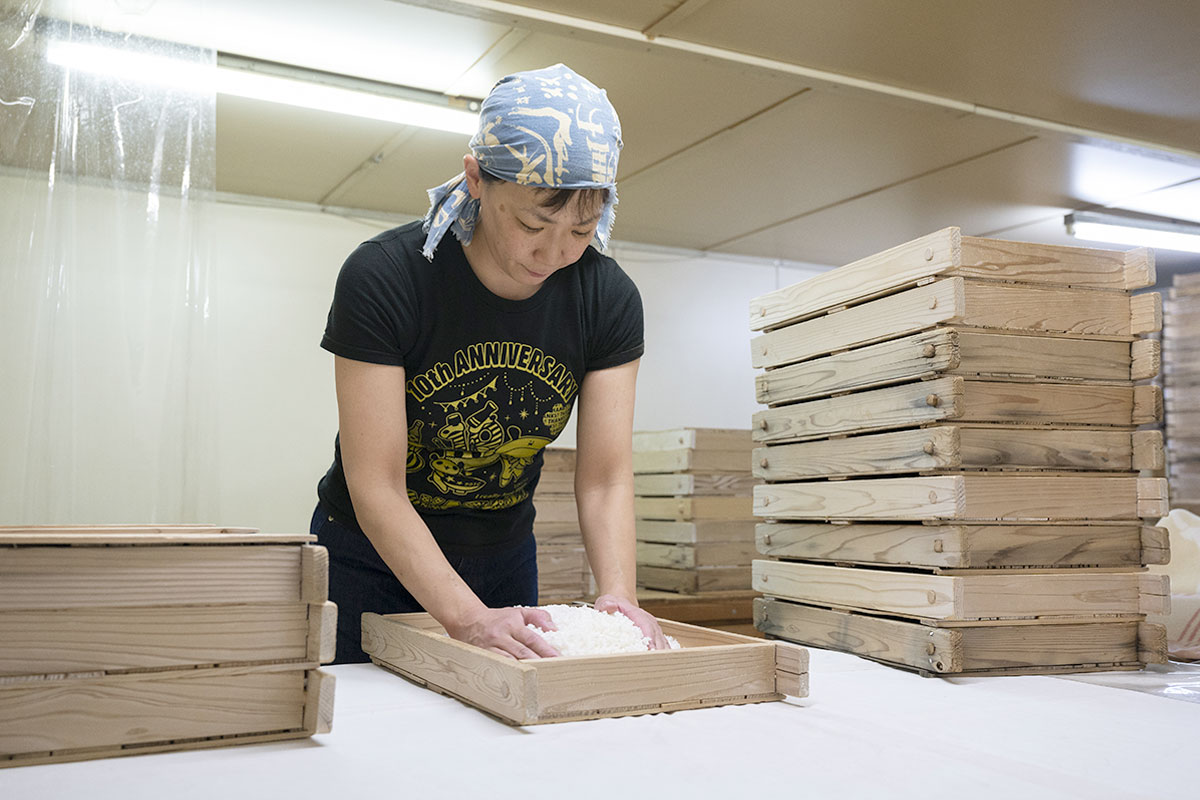
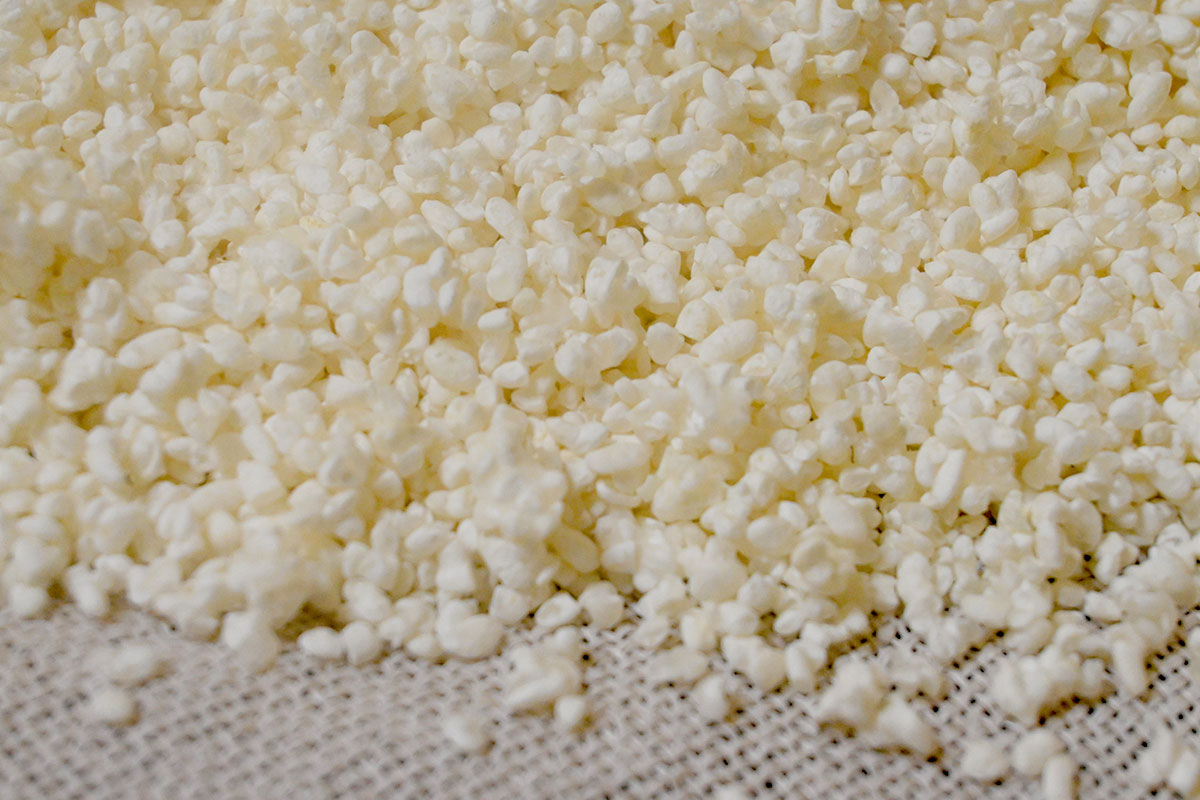
Steaming the rice
At Moriki Shuzō, we steam our rice using an old-fashioned Japanese cauldron and a fuel oil burner.
The cauldron is filled with water and heated with the burner to produce steam. As the evaporation causes the water level in the cauldron to drop, the inside wall of the cauldron is exposed at the top. When the flames of the burner hit the outside of that exposed surface, the heat removes some of the moisture from the steam, thus generating a dry steam. By steaming our rice with this dry steam, we can produce cooked rice that is dry and hard on the outside, but soft on the inside, which is ideal for our purpose.
As for how we cook the rice, we use a method called nukegake-hō, whereby rice is placed in thin layers on the steamer, one layer at a time. When the steam comes through one layer, the next layer is added, and when the steam comes through that layer, another is added, and so on.
Using this method ensures evenly steamed rice, and therefore a better quality of steamed rice.
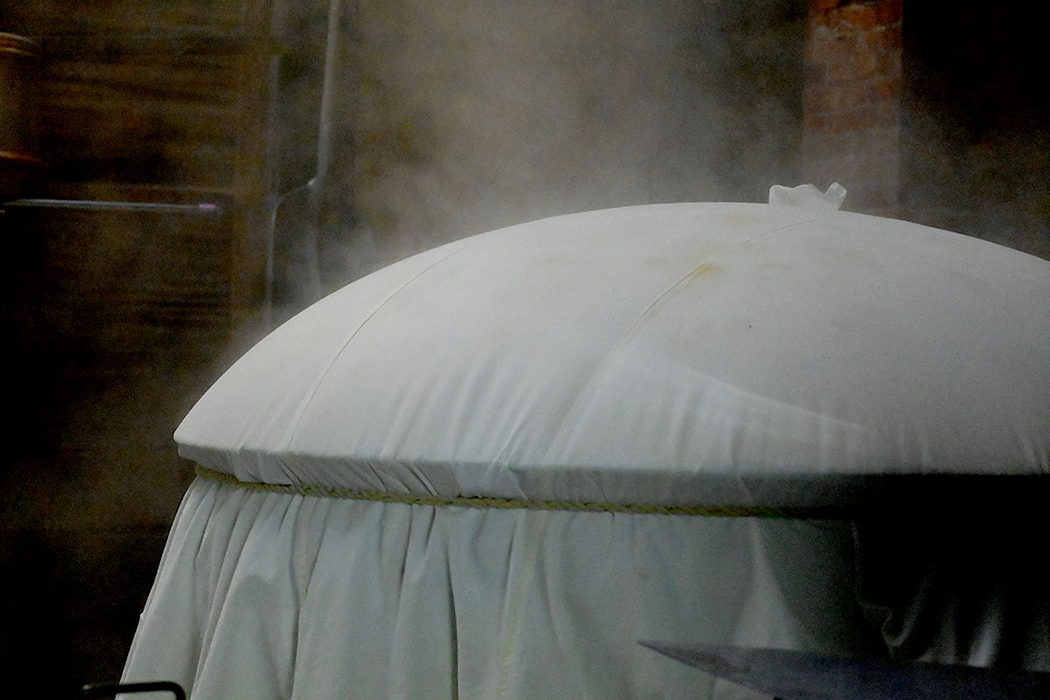
Producing Kimoto and Yamahai brews without adding yeast
Since 2016, we have been producing our kimoto and yamahai brews without adding yeast, depending entirely on naturally occuring yeast and lactobacilli to develop the starter mash.
In both cases, the starter mash requires about 40 days to develop, and the main mash a further month. This is about double the time and labor needed to brew sake using the sokujō method, but it results in a taste that is unique to our brewery, with a complexity and depth of flavor that can be attained only through natural fermentation.
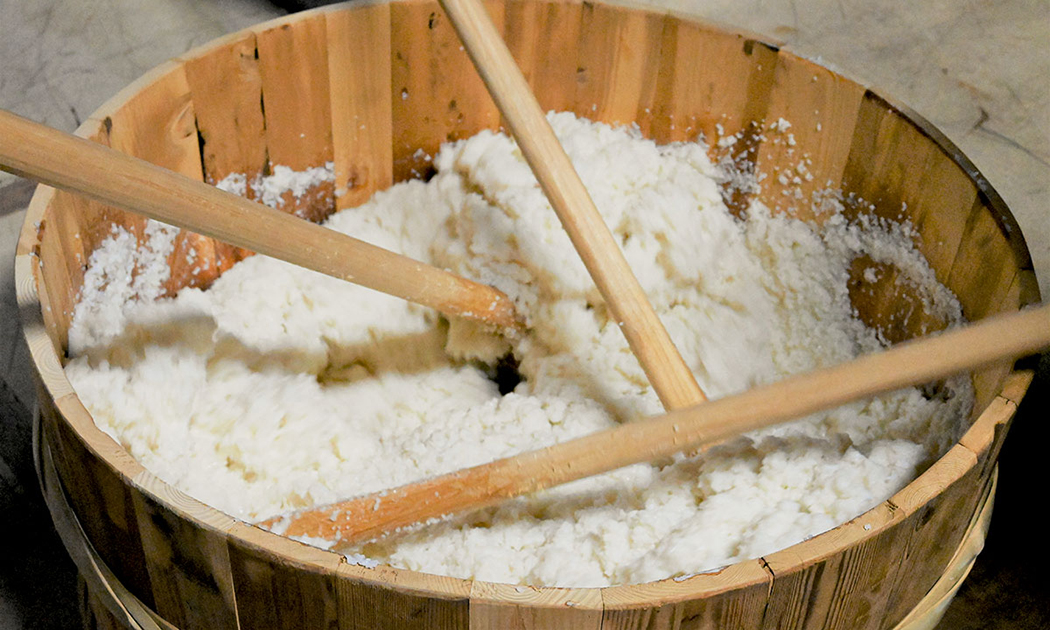
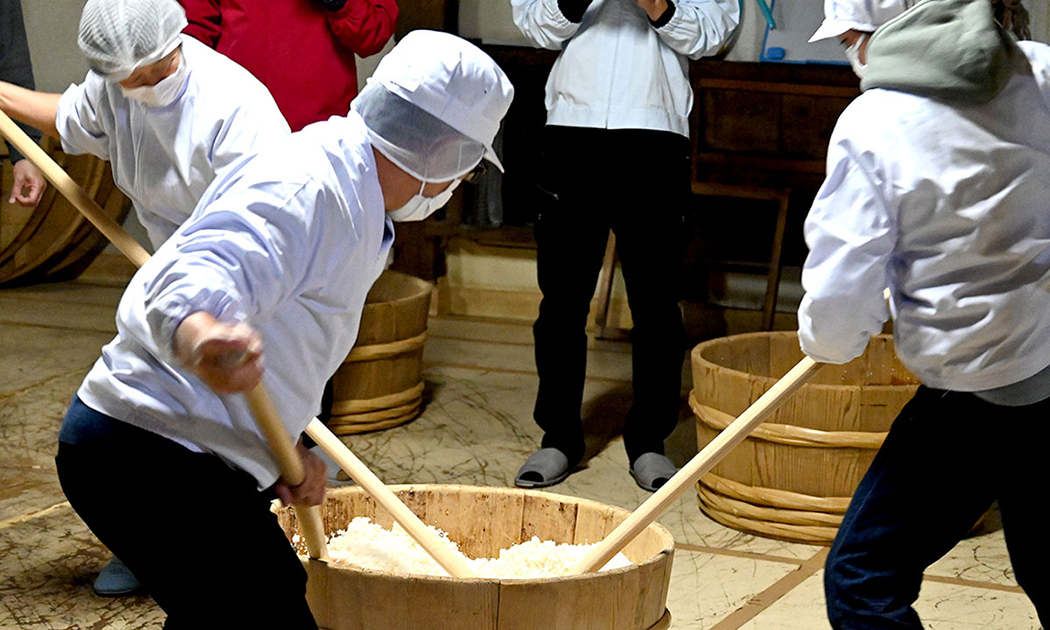
Growing organic rice
For Hanabusa and our other product lines using the Yamadanishiki variety of brewing rice, we also grow our own rice. By not using herbicides and pesticides, we force the rice to rely on its own natural tendency to protect itself from weeds and insects, thus bringing out the full potential of the rice to grow vigorous, hardy grains.
The only fertilizer we use is sakekasu, the pressed solids from our own sakes. Although our yields are modest, because the rice plants we grow get no more nutrients or water than they need, they are strong and deeply rooted.
The reason we work so hard to grow organic Yamadanishiki rice is simple: we want people who drink our sake to taste the true flavors of rice.
